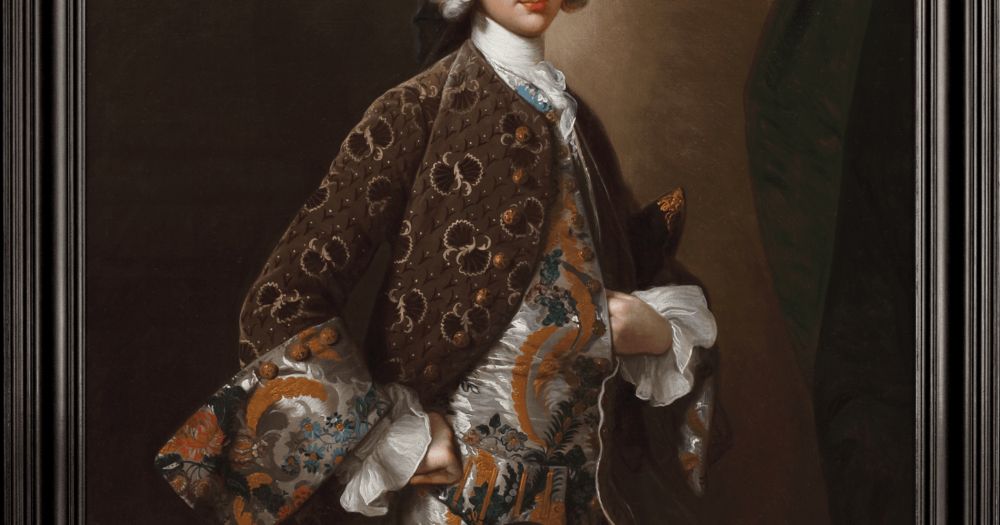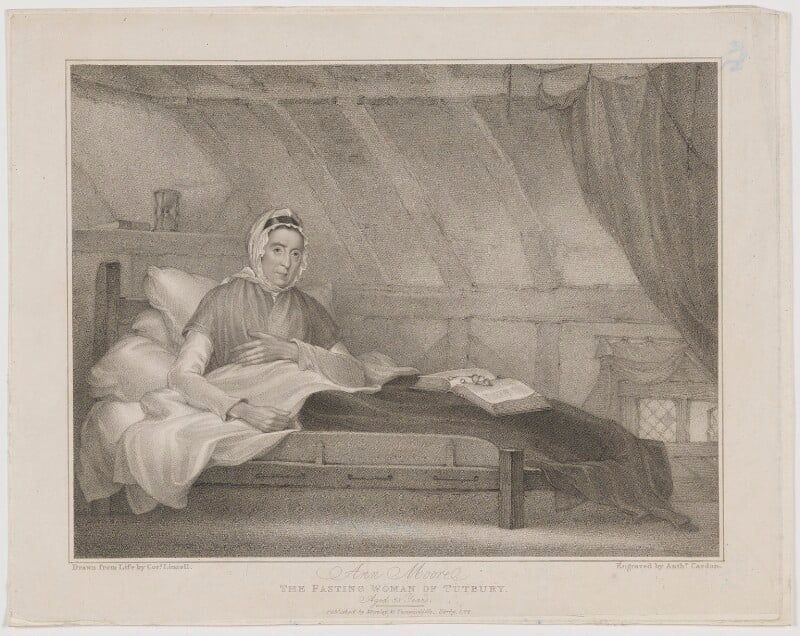
Host of the website: All Things Georgian. https://georgianera.wordpress.com/

I am delighted to welcome back a regular guest, Elaine Thornton to All Things Georgian to tell us an interesting story I hadn't come across before: In the early afternoon of 1 December 1804 groups of excited people…
I am delighted to welcome back a regular guest, Elaine Thornton to All Things Georgian to tell us an interesting story I hadn't come across before: In the early afternoon of 1 December 1804 groups of excited people…

I am delighted to welcome back a regular guest, Elaine Thornton to All Things Georgian to tell us an interesting story I hadn't come across before: In the early afternoon of 1 December 1804 groups of excited people…
philipmould.com/artworks/cat...

philipmould.com/artworks/cat...
... fingers crossed for an apology but not a daft and unnecessary settlement ...
youtu.be/VeIF4leMaes

... fingers crossed for an apology but not a daft and unnecessary settlement ...
youtu.be/VeIF4leMaes
This was a case covered by many of the newspapers of the day due to its horrific nature and its subsequent trial at the Old Bailey, and yet it seems to have been lost to history, so let’s begin at the beginning. Samuel Wild Mitchell was born in 1751,…

This was a case covered by many of the newspapers of the day due to its horrific nature and its subsequent trial at the Old Bailey, and yet it seems to have been lost to history, so let’s begin at the beginning. Samuel Wild Mitchell was born in 1751,…
This was a case covered by many of the newspapers of the day due to its horrific nature and its subsequent trial at the Old Bailey, and yet it seems to have been lost to history, so let’s begin at the beginning. Samuel Wild Mitchell was born in 1751,…

This was a case covered by many of the newspapers of the day due to its horrific nature and its subsequent trial at the Old Bailey, and yet it seems to have been lost to history, so let’s begin at the beginning. Samuel Wild Mitchell was born in 1751,…
It is a pleasure to welcome back Dr Paul Main, who will share more fascinating information about Bristol. Some of his previous articles have been - 'The Romantic Poets in Bristol' and 'The Story of the…

It is a pleasure to welcome back Dr Paul Main, who will share more fascinating information about Bristol. Some of his previous articles have been - 'The Romantic Poets in Bristol' and 'The Story of the…
It is a pleasure to welcome back Dr Paul Main, who will share more fascinating information about Bristol. Some of his previous articles have been - 'The Romantic Poets in Bristol' and 'The Story of the…

It is a pleasure to welcome back Dr Paul Main, who will share more fascinating information about Bristol. Some of his previous articles have been - 'The Romantic Poets in Bristol' and 'The Story of the…

Super portrait of her by Hudson at the Yale Center for British Art.
#skystorians

Super portrait of her by Hudson at the Yale Center for British Art.
#skystorians

In early June 1809, the second battalion of the 8th regiment returned to Portsmouth with preparations being made for them to sail out towards the end of the month. Their baggage and ammunition were placed on Point Beach. About 11am on 24 June there was a…

In early June 1809, the second battalion of the 8th regiment returned to Portsmouth with preparations being made for them to sail out towards the end of the month. Their baggage and ammunition were placed on Point Beach. About 11am on 24 June there was a…
In early June 1809, the second battalion of the 8th regiment returned to Portsmouth with preparations being made for them to sail out towards the end of the month. Their baggage and ammunition were placed on Point Beach. About 11am on 24 June there was a…

In early June 1809, the second battalion of the 8th regiment returned to Portsmouth with preparations being made for them to sail out towards the end of the month. Their baggage and ammunition were placed on Point Beach. About 11am on 24 June there was a…


I am always delighted to welcome back to All Things Georgian, Jim Symington, and today he's going to tell us more about one of my favourite artists, Thomas Lawrence. Like me, Jim has a keen interest…

I am always delighted to welcome back to All Things Georgian, Jim Symington, and today he's going to tell us more about one of my favourite artists, Thomas Lawrence. Like me, Jim has a keen interest…
I am always delighted to welcome back to All Things Georgian, Jim Symington, and today he's going to tell us more about one of my favourite artists, Thomas Lawrence. Like me, Jim has a keen interest…

I am always delighted to welcome back to All Things Georgian, Jim Symington, and today he's going to tell us more about one of my favourite artists, Thomas Lawrence. Like me, Jim has a keen interest…
Much of this tale is very well known so I won’t go into too much detail about the case as it’s readily available online, but it does raise some curious questions for me, and of course, I do like to find answers if possible. In 1807…

Much of this tale is very well known so I won’t go into too much detail about the case as it’s readily available online, but it does raise some curious questions for me, and of course, I do like to find answers if possible. In 1807…
I have, in the past, looked at a wide variety of colours worn during the Georgian era, and this article is about the colour purple, which was very fashionable throughout the period. According to The Elements of Dying by Claude Louis Berthollet in 1824: Purple…

I have, in the past, looked at a wide variety of colours worn during the Georgian era, and this article is about the colour purple, which was very fashionable throughout the period. According to The Elements of Dying by Claude Louis Berthollet in 1824: Purple…
It is always a pleasure to welcome back to All Things Georgian my next guest, Dr Judith Pearson, who has written several guest pieces on here which you can read using the highlighed link above. Readers of All Things Georgian…

It is always a pleasure to welcome back to All Things Georgian my next guest, Dr Judith Pearson, who has written several guest pieces on here which you can read using the highlighed link above. Readers of All Things Georgian…

I have been taking a look at hair removal for women in the 18th and early 19th centuries and it seems highly likely that the only part of their body that they remove hair from was on their face. It’s not clear whether hair removal related just to eyebrows or all…

I have been taking a look at hair removal for women in the 18th and early 19th centuries and it seems highly likely that the only part of their body that they remove hair from was on their face. It’s not clear whether hair removal related just to eyebrows or all…

1/2

1/2
It is a pleasure to welcome a new guest to All Things Georgian and today it's my pleasure to welcome Nick Bromley, so let's begin with a very brief glimpse into Nick's background, then he will tell you more…

It is a pleasure to welcome a new guest to All Things Georgian and today it's my pleasure to welcome Nick Bromley, so let's begin with a very brief glimpse into Nick's background, then he will tell you more…




